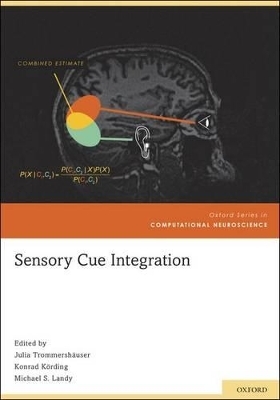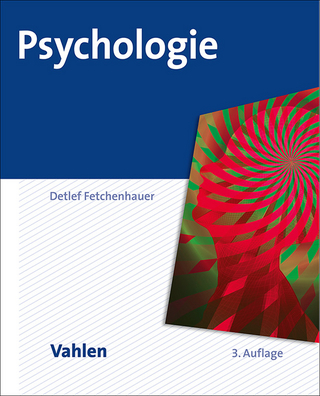
Sensory Cue Integration
Oxford University Press Inc (Verlag)
978-0-19-538724-7 (ISBN)
The broadening scope of probabilistic approaches to cue combination is highlighted in the breadth of topics covered in this book: the chapters summarize and discuss computational approaches and behavioral evidence aimed at understanding the combination of visual, auditory, proprioceptive, and haptic cues. Some chapters address the combination of cues within a single sensory modality while others address the combination across sensory modalities. Neural implementation, behavior, and theory are considered. The unifying aspect of this book is the focus on the uncertainty intrinsic to sensory cues and the underlying question of how the nervous system deals with this uncertainty.
The book is intended as a reference text for graduate students and professionals in perceptual psychology, computational neuroscience, cognitive neuroscience and sensory neurophysiology.
Julia Trommershäuser spent three years as a postdoctoral researcher at New York University. From 2004-2009, she was a researcher in the Department of Psychology at Giessen University, Germany, funded by an Emmy-Noether Research Award by the German Science Foundation (DFG). She currently works at the Center for Neural Science at New York University on questions in the field of human decision-making under risk and uncertainty. Konrad Körding is an Assistant Professor at Northwestern University. His lab focuses on the statistical processing of information in the sensorimotor system. Michael Landy is a Full Professor of Psychology and Neural Science at New York University. His research concerns visual and visuomotor behavior.
Preface ; I. Theory and Fundamentals ; 1. Ideal-Observer Models of Cue Integration ; Landy, Banks, & Knill ; 2. Causal Inference in Sensorimotor Learning and Control ; Wei & Kording ; 3. The Role of Generative Knowledge in Object Perception ; Battaglia, Kersten, & Schrater ; 4. Generative Probabilistic Modeling: Understanding Causal Sensorimotor Integration ; Vijayakumar, Hospedales, & Haith ; 5. Modeling Cue Integration in Clutter ; Sahani & Whiteley ; 6. Recruitment of New Visual Cues for Perceptual Appearance ; Backus ; 7. Combining image signals before 3D reconstruction: The Intrinsic Constraint Model of Cue Integration ; Domini & Caudek ; 8. Cue Combination: Beyond So-Called "Optimality" ; Rosas & Wichmann ; II. Behavioral Studies ; 9. Priors and Learning in Cue Integration ; Seydell, Knill, & Trommershauser ; 10. Combining Vision With Audition and Touch, In Adults and In Children ; Burr, Binda, & Gori ; 11. The Statistical Relationship
| Reihe/Serie | Computational Neuroscience Series |
|---|---|
| Zusatzinfo | 178 illustrations |
| Verlagsort | New York |
| Sprache | englisch |
| Maße | 257 x 188 mm |
| Gewicht | 1287 g |
| Themenwelt | Geisteswissenschaften ► Psychologie ► Allgemeine Psychologie |
| Geisteswissenschaften ► Psychologie ► Verhaltenstherapie | |
| Medizin / Pharmazie ► Medizinische Fachgebiete ► Neurologie | |
| Naturwissenschaften ► Biologie ► Humanbiologie | |
| Naturwissenschaften ► Biologie ► Zoologie | |
| ISBN-10 | 0-19-538724-4 / 0195387244 |
| ISBN-13 | 978-0-19-538724-7 / 9780195387247 |
| Zustand | Neuware |
| Informationen gemäß Produktsicherheitsverordnung (GPSR) | |
| Haben Sie eine Frage zum Produkt? |
aus dem Bereich


